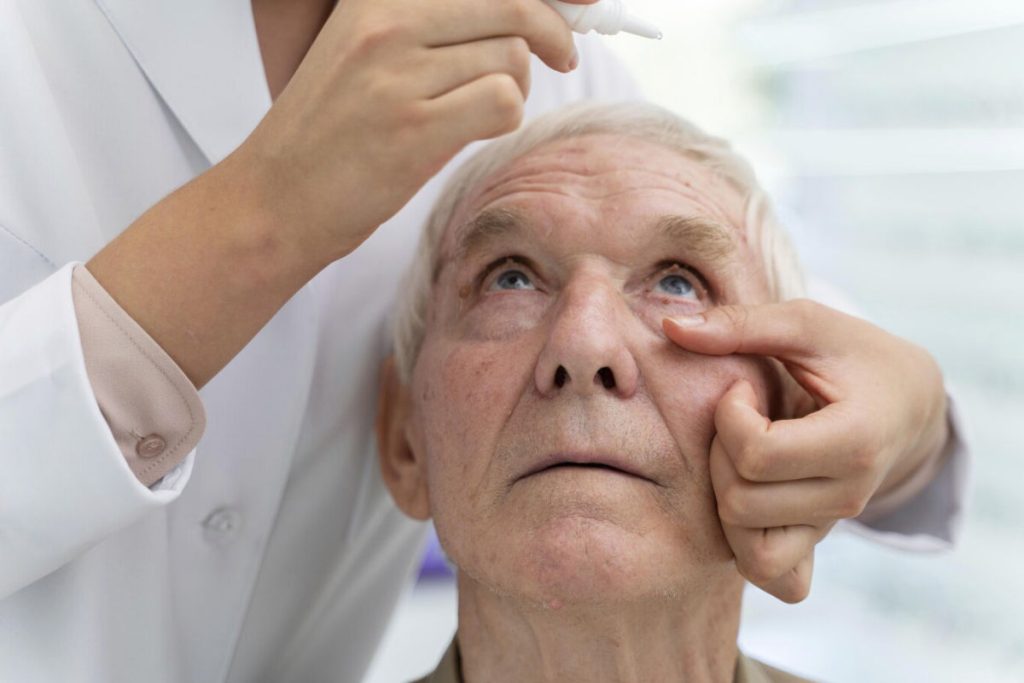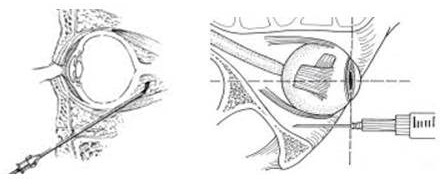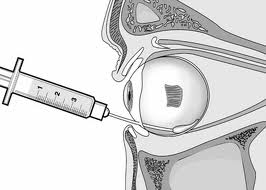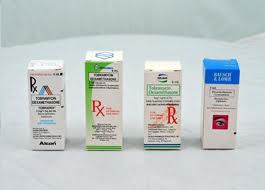
Just before cataract surgery – anesthesia
There is no arguing that your eye should be comfortable and numbed with sufficient amounts of anesthetic before any eye surgery is performed. These days, the majority of cataract surgery (or cataract extraction) is performed as a day case under local anesthesia. Local anesthesia can be given as eye drops or injections around the eyeball.
Topical anesthesia with eye drops ( such as tetracaine/methocaine and oxybuprocaine / benoxinate) is able to numb the eye sufficiently for surgery for most people. The advantage of having surgery only with anesthetic drops is that the recovery time is much faster. Often you will notice an improvement in vision within 1 or 2 hours of surgery. The downside is that you are more likely to feel more discomfort during surgery.
Anesthetic injections are administered in 3 ways: retrobulbar, peribulbar and subtenon. Retrobulbar and peribulbar injections are now slowly falling out of favor for cataract operations, but are still useful for other forms of eye surgery. The anesthetic drugs used for injections include lidocaine/lignocaine, ropivacaine and bupivacaine.
Retrobulbar administration involves injecting the anesthetic behind the eyeball with a sharp needle. Peribulbar administration involves injecting the anesthetic on either side of the eyeball, again with a sharp needle.

In retrobulbar anesthesia (left), the sharp needle is passed behind the eyeball within the muscle cone. This is in contrast to peribulbar anesthesia (right), where the sharp needle is inserted adjacent (not behind) to the eyeball.
Subtenon administration is the safest among all the injection methods. This involves first making a small 5mm cut on the conjunctiva and tenon, and then slipping a blunt cannula under the tenon (hence the term subtenon). This technique does not involve any sharp needles and therefore reduces the risk of eyeball perforation significantly.

Subtenon anesthesia does not require the use of sharp needles for delivery of the anesthetic. Instead, a curved, blunt canula is passed around the eyeball. This technique is very safe and very effective, and is thus very widely used by many surgeons.
The advantage of anesthetic injections is that the eye will be virtually completely numb and immobile during surgery. So you don’t have to worry about pain or sudden eye movements. The downside is that the eye won’t have any vision immediately after surgery and recovery time will take a good few hours, sometimes up to a day. It is also not uncommon to experience double vision, but this settles as the anesthetic wears off.
The commonest practice currently is cataract surgery under topical anesthesia or subtenon anesthesia. If all this sounds too scary, your ophthalmologist will be happy to arrange for surgery to be performed under general anesthesia if that is what you prefer.
During cataract surgery
After the anesthesia has been achieved, your eye will be cleaned with an antiseptic such as povidone iodine or chlorhexidine. Your ophthalmologist will then place a sterile drape over your face to keep the area clean. There will usually be air blowing in through a little tube under the drape so you can continue to breathe normally. Once a clip is in place to keep your eyelids open, your surgeon can commence the operation.
Depending on the difficulty level, the whole procedure can take from 10 minutes to 45 minutes. You will need to lie flat on your back for this time. The important thing is not to move your eyes or head during surgery. Try not to speak as it will also cause some head movement and affect surgery.

Sometimes, you may feel some fluid trickling down your cheek. Do not worry; this is NOT your blood. It is the fluid from the operation that has seeped through the drape. And finally, you will also NOT see sharp instruments heading towards your eye! All you will see are bright and colorful lights, with the occasional shadow.
Learn more about all the steps involved in cataract extraction here
After cataract surgery
You will be able to go home after a short rest following surgery. Do not drive. Make sure there is someone with you for 24 hours after surgery. Your eye will feel uncomfortable, sore and itchy for the next few weeks. It will also be sensitive to light and feel as though there is something in the eye. You will be given eye drops (antibiotic to prevent infection and steroid to reduce inflammation). You will need to instil these eye drops for up to 6 weeks after surgery. Be careful not to accidentally hit or press against the eye. It is best not to swim or engage in strenuous activities while you are still applying the eyedrops. However, it is alright to read or watch television.

It is important to ensure that you instil the eye drops given to you after cataract surgery. These drops reduce the risk of infection (antibiotics) and help to settle down inflammation (steroids). If you find the eye drops difficult to manage, you can ask for combined antibiotic and steroid preparations in the same bottle, instead of the antibiotic in one bottle and the steroid in a separate bottle.
After 4 to 6 weeks, the eye will have adapted to the intraocular lens and you may find that you can see in the distance well but more difficult to see close up things. New glasses can definitely sharpen up the focus for distance and near objects. You should be able to engage in your normal daily activities after this period. You can usually drive again a week after surgery, but do remember to confirm that with your ophthalmologist.
It is definitely a worthwhile procedure to have done. Millions of people throughout the world have benefited from successful cataract surgery. After surgery, you will be able to:
– See things in better focus
– Look at bright lights with much less glare
– Notice that colors are much brighter
– Return to the normal activities that you enjoy doing
If you have other eye disorders, such as age-related macular degeneration, glaucoma or diabetic retinopathy, your vision may not improve as much. It is still important to make sure that the other diseases are being treated. Just because you have had your cataracts removed does not mean that your other eye diseases have been cured!
Learn more about the entire cataract surgery process from start to finish
What if the cataract is not treated
Cataracts form slowly over years. Almost everybody develops cataracts with age, but not everyone has cataract surgery. Some people find that despite the cataract, their vision remains good and they retain a good quality of life. An unoperated cataract does not have any direct ill-effects on the body or eye.
However, your vision will get worse gradually as the cataract advances. If the cataract is operated at a much later age, the risk of something going wrong during surgery becomes higher. Cataract surgery significantly improves the quality of life, and has one of the best per quality of life improvement per unit cost indices of any medical or surgical procedure. For instance, cataract surgery improves independence, reduces the risk of accidents and falls, and allows a return to driving.
The important thing here is that you must feel comfortable with whether or not to go ahead with surgery. And if you are, you should also be the best person to judge when to do so.


